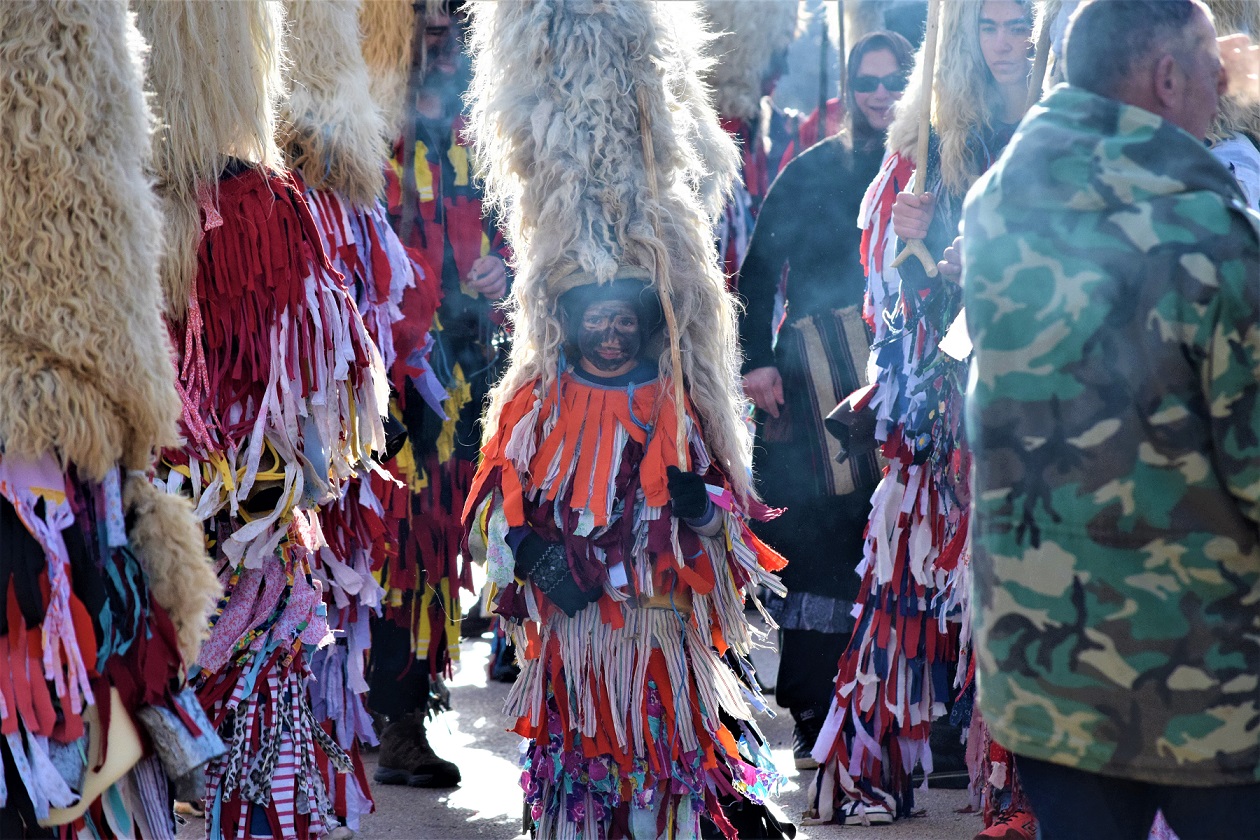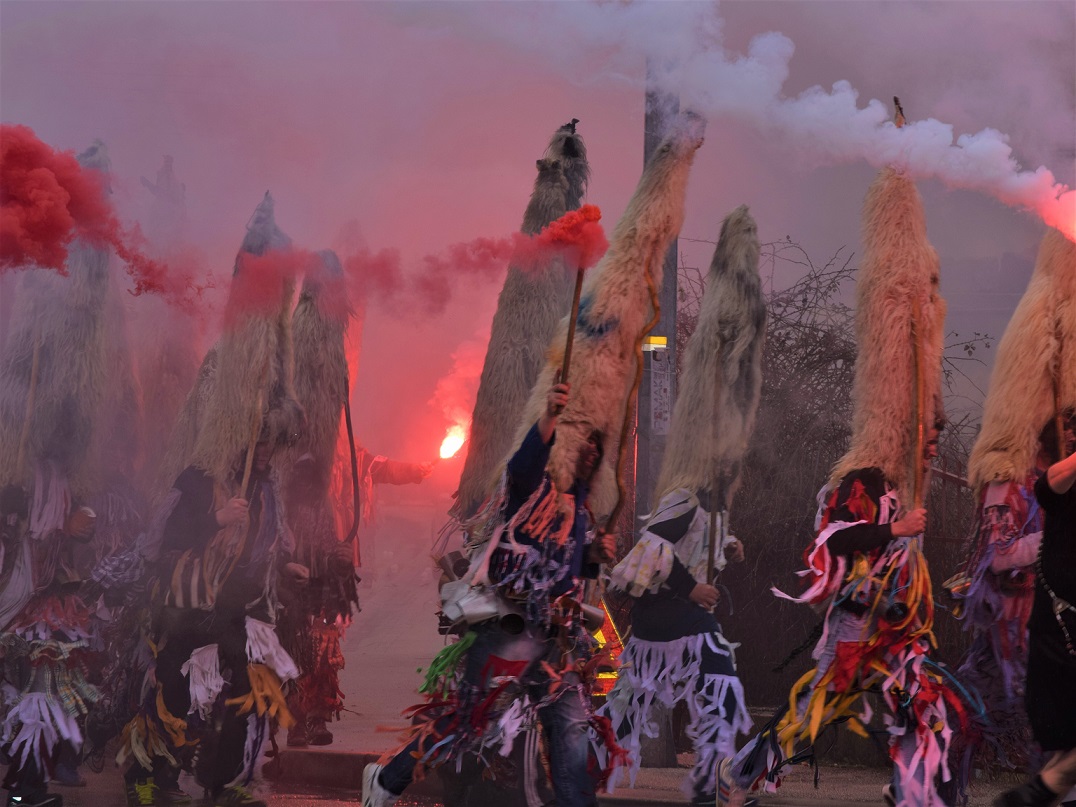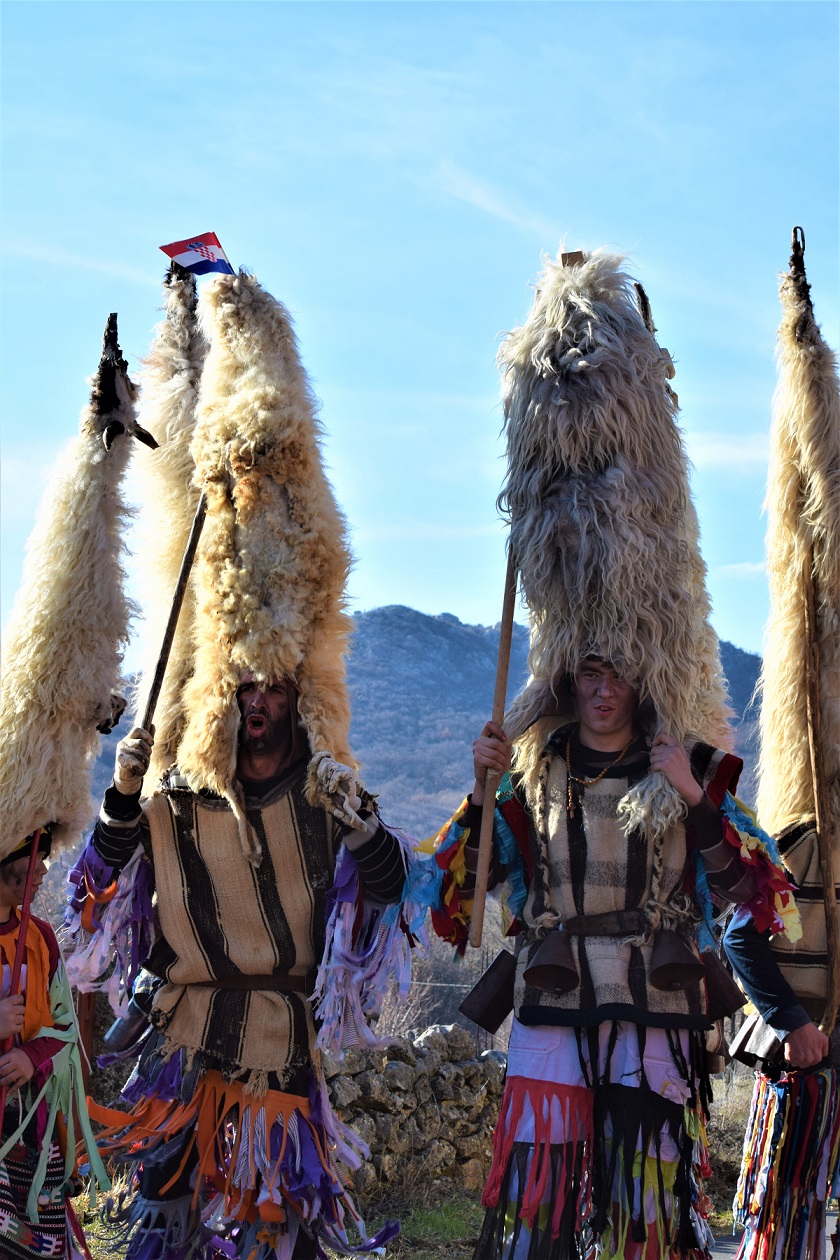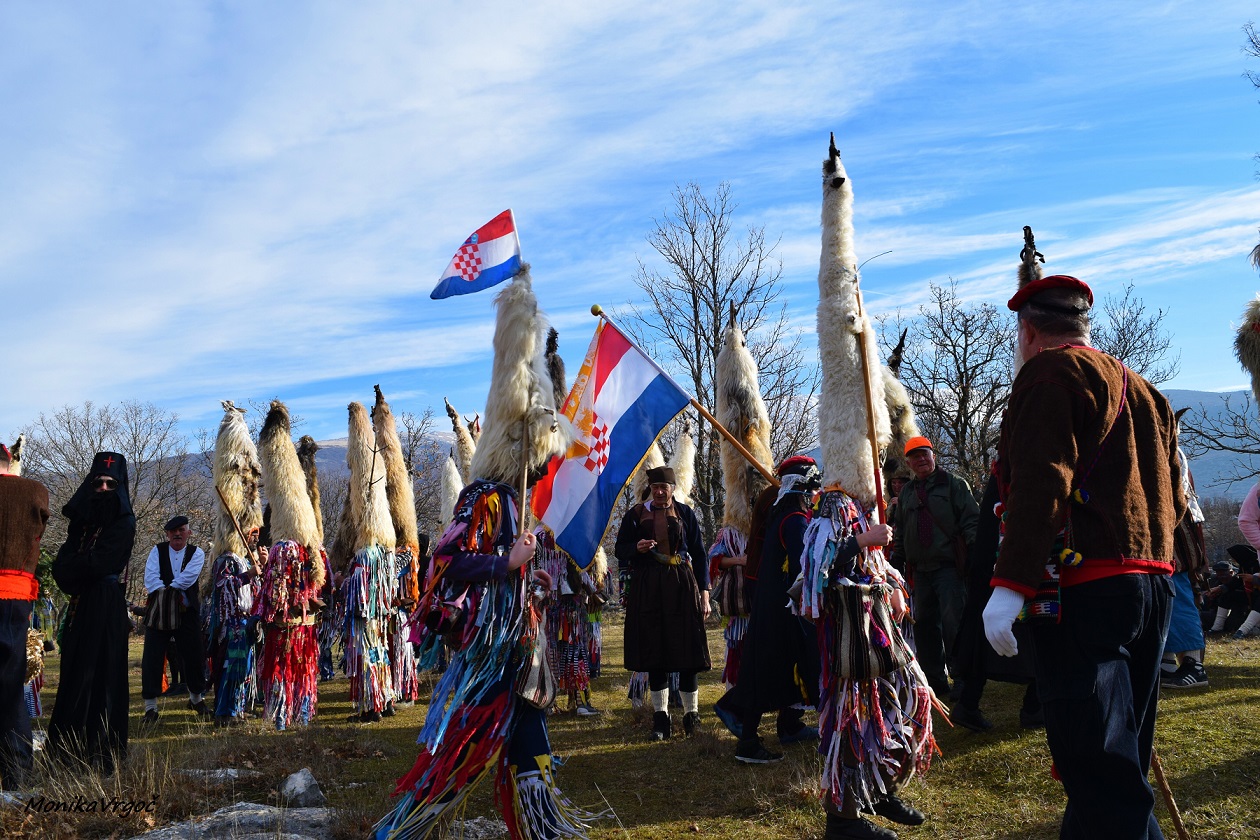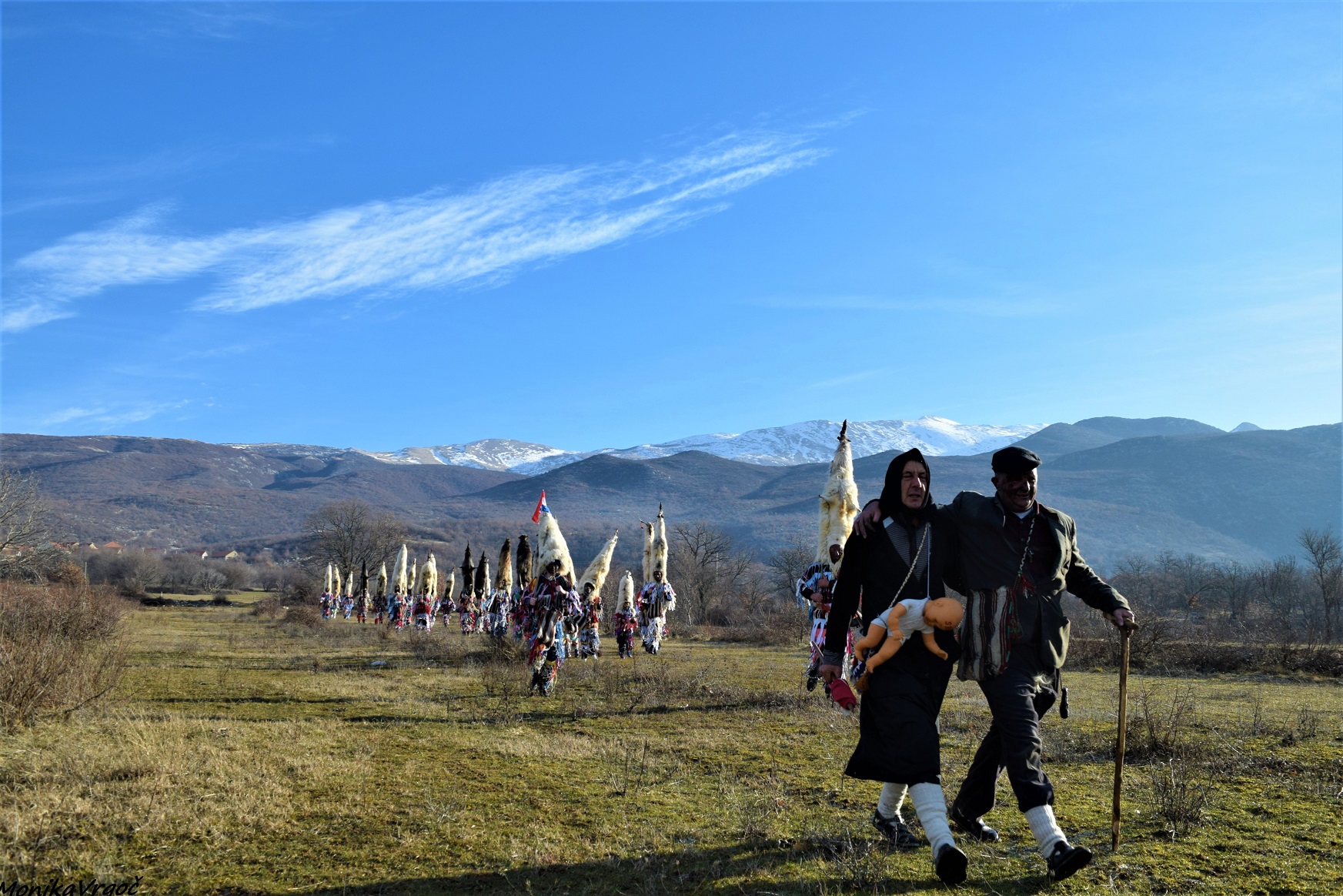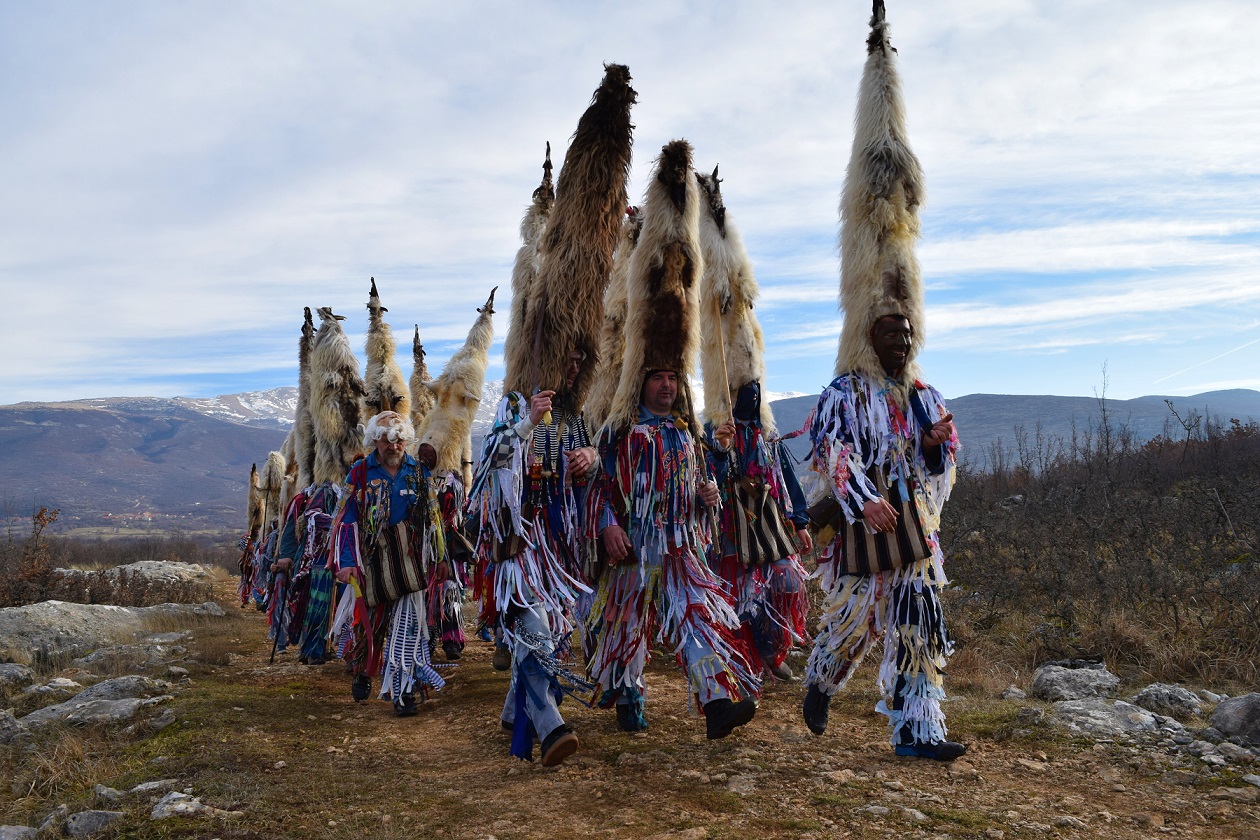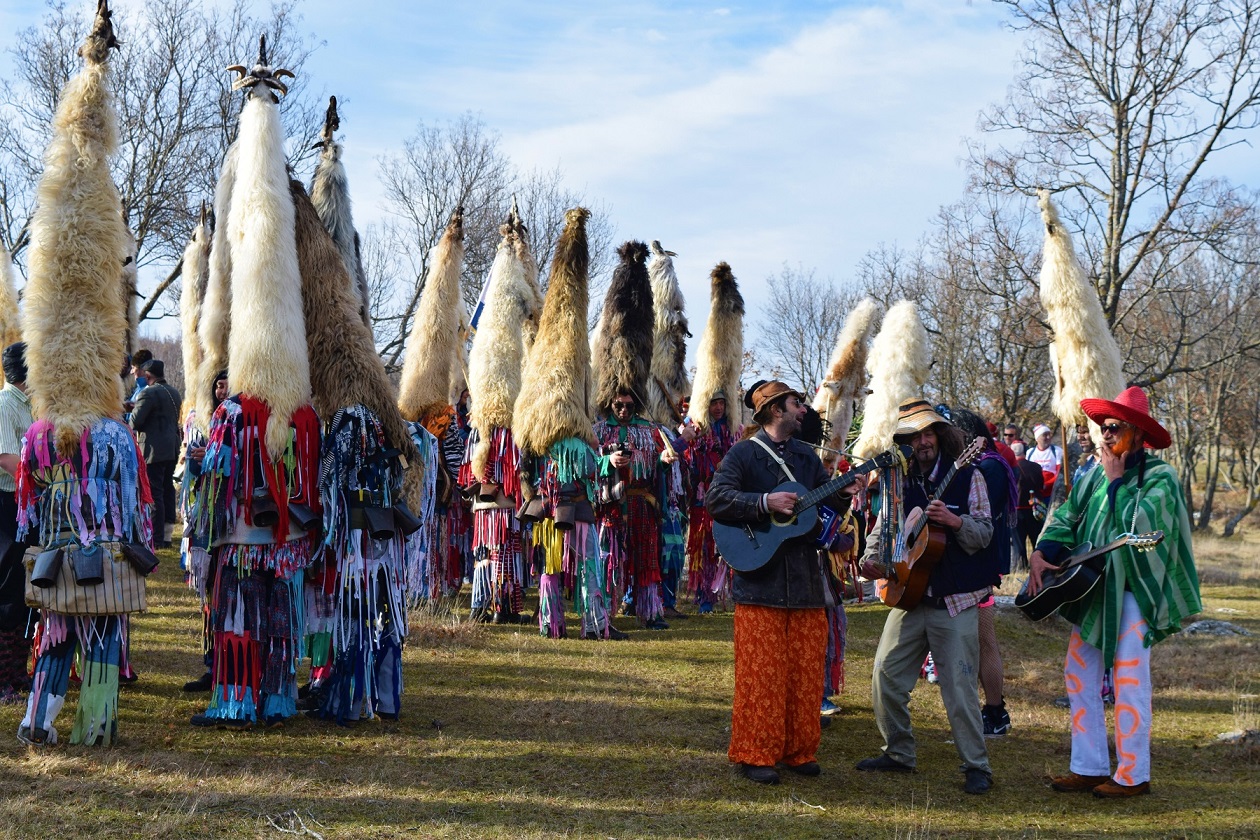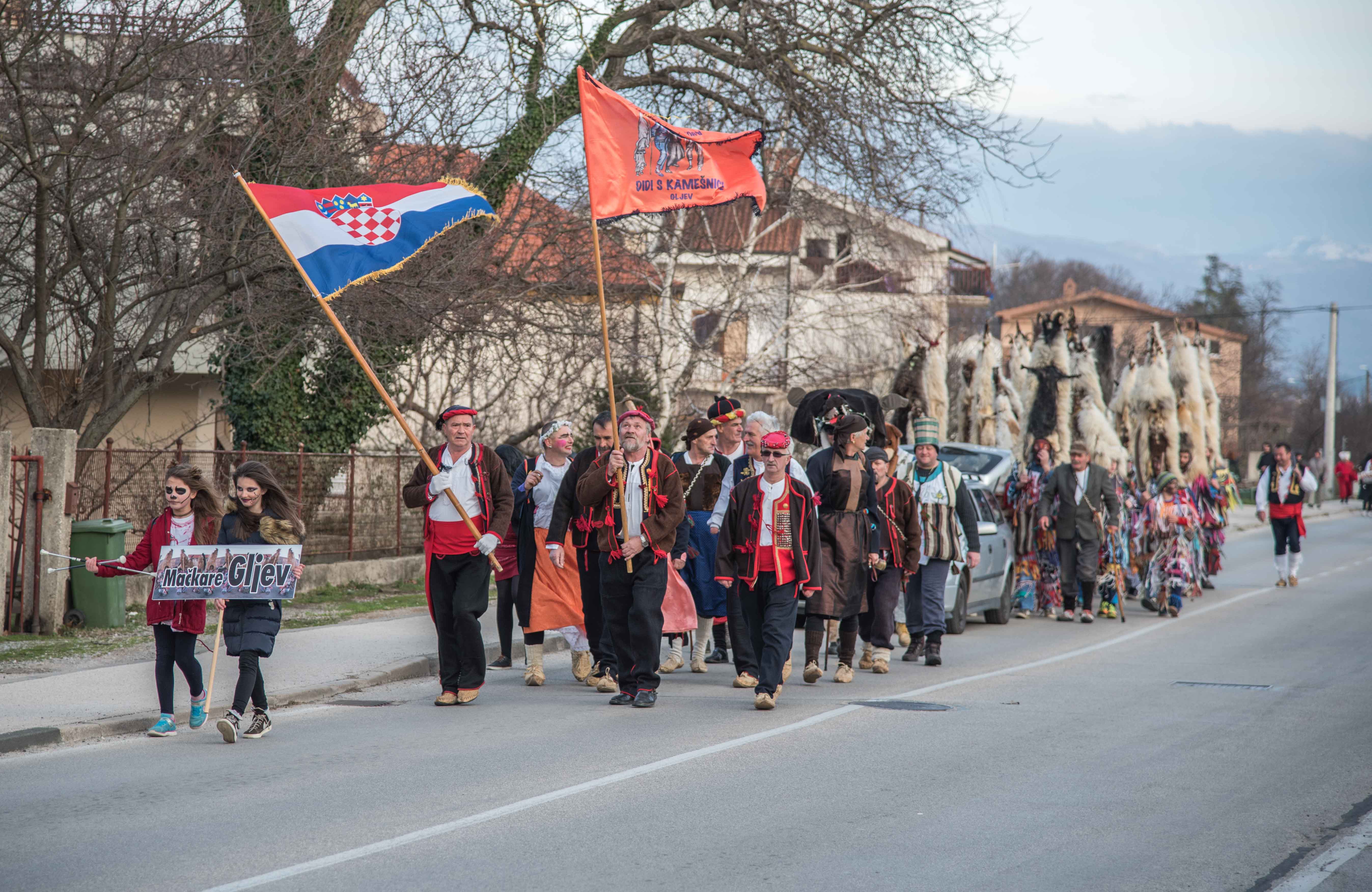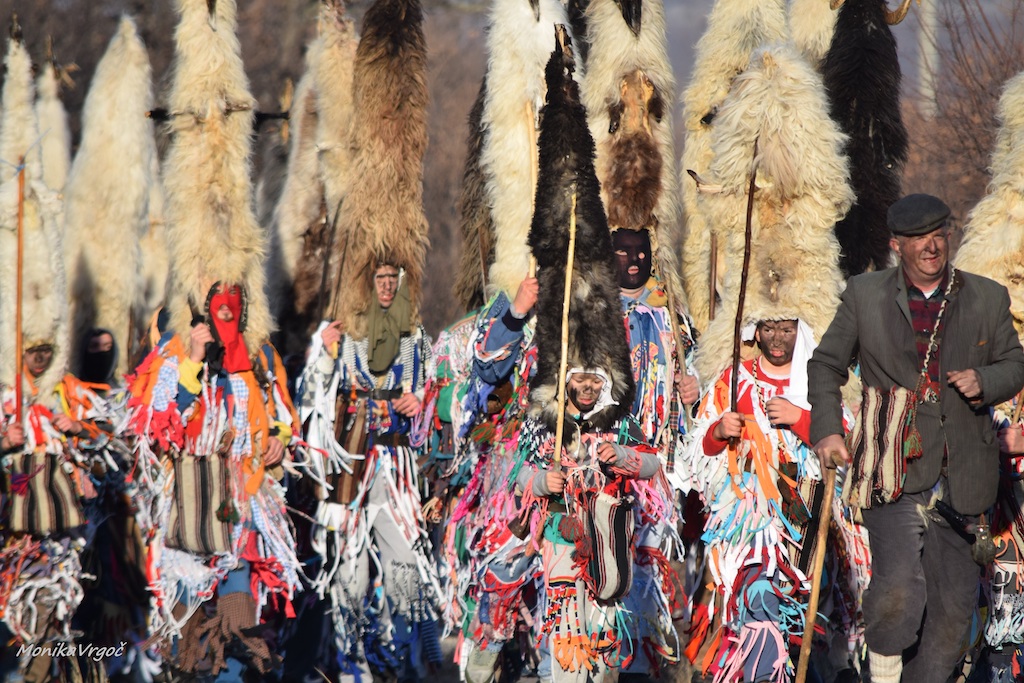Didi s Kamesnice and More Carnival Customs from the Dalmatian Hinterland
February 13, 2021 – Sinj and the Cetina region have long attracted attention with unique and exciting events. One of them is certainly their well-known masquerade festival with 'Didi s Kamesnice', masquerade group from the village of Gljev in the Dalmatian hinterland.
Cetina Region's Masquerade Festival should have been held for the seventh time this year, as well as the centuries-old gatherings of masquerade groups in the Podkamešnica villages, which were supposed to precede the festival and the usual final carnival events. However, due to the ongoing coronavirus pandemic, it was all postponed for the next year.
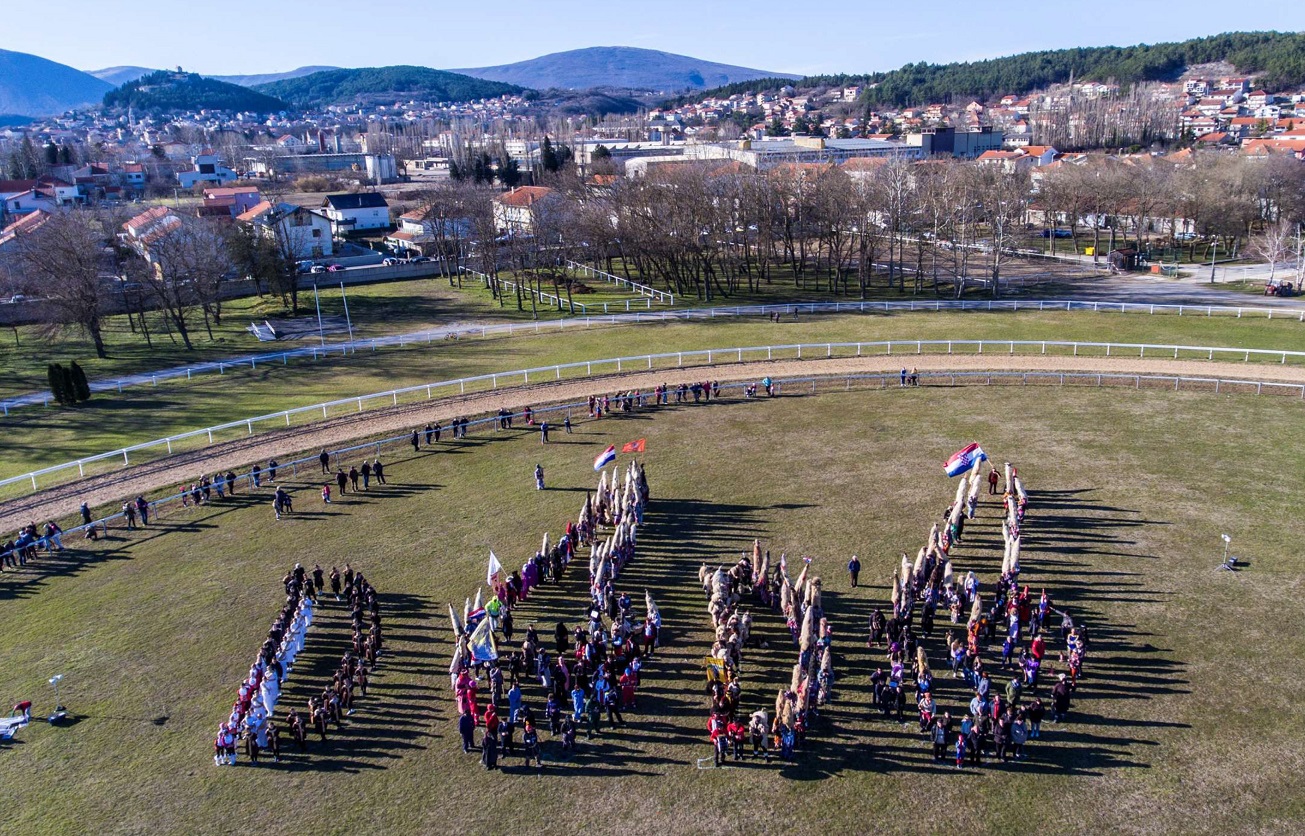
Millennial photo of the Sinj region masquerades - DIDI / Šime Strikoman
At the Festival, numerous masquerade groups present themselves to the general public in one place. The result is a lively, cheerful, colorful, and noisy procession that maintains a long tradition, according to carefully and strictly established rules.
Croatian protected intangible heritage
Masquerades are the best bearers and guardians of carnival customs in the Cetina region. After the Holy Three Kings' feast on January 6, they set out on visits to villages and hamlets. They are even included on the list of protected intangible cultural goods of the Republic of Croatia, which testifies how precious they are.
Podkamešnička villages are villages at the foot of Kamešnica mountain located on Croatia's border with Bosnia and Herzegovina, near Sinj in the Dalmatian hinterland.
In the villages of Gljev, Han, Obrovac Sinjski, Bajagić, and Gala, masquerade processions are a unique and original way of depicting ancient customs interwoven with the sound of masquerade bells and other accompanying rituals.
Masquerade procession in Obrovac Sinjski / Monika Vrgoč
In the municipality of Otok, each hamlet has its own masquerade group (Jelašce, Priblaće, Živinice, Gala, Ruda, Udovičići, and occasionally there are groups Glavičica-Priblaće, Strana with masquerades from Ovrlje and Korita). In the town of Trilj, masquerade processions take place in the villages of Grab, Jabuka, Košute, Vedrine, Vrpolje, Čačvina, and Velić.
Masquerade procession in Otok / Monika Vrgoč
Masquerade procession in Vrpolje / Monika Vrgoč
Driving away winter and bad spirits
The carnival procession's schedule is based on traditional rules, not subject to any changes, and only men participate in it. At the head is a group of white masquerades and wedding guests, then a group of comedies, and finally, with a certain distance, black masquerades.
The wedding party, which symbolizes the end of winter and spring arrival, was once led by the first grandfather (hrv. dida) and nowadays by the flag bearer (hrv. barjaktar).
Gljev / Monika Vrgoč
The masculine, pregnant bride, accompanied by a groomsman, is looking for the groom, which is the procession's main "task."
There are also married women, girls, and other wedding characters dressed in formal attire (folk costume).
Turk commands the masquerades, taking care not to mix white and black wedding guests, who must never be in the same place at the same time. The Turk and the aunt's characters are associated with the long presence of the Ottomans in this area.
Black wedding guests / Monika Vrgoč
Behind the wedding are comedies, a masquerade group that criticizes current social and political topics without sparing criticism.
Grandparents lead black weddings. They are bearers of the fertility cult who, by simulating sexual intercourse, invoke a better and more abundant annual harvest, another indispensable ritual element.
Grandparents in Gljev / Monika Vrgoč
There are also mourners in the procession, mourning widows who shout funny and comic slogans.
The most attractive and impressive part of the procession are the imposing "didi." They wear sheep's wool up to 1.5 m high on their heads and bells around their waists. They are dressed in old clothes sewn with colorful fringes.
They embody the age-old ritual struggle of good spirits with winter, which they drive away with noise and jumping. With the loud ringing of bells, they cast spells from cattle, which, along with fertility and spring arrival, testifies the most important preoccupations of our ancestors.
Monika Vrgoč
Monika Vrgoč
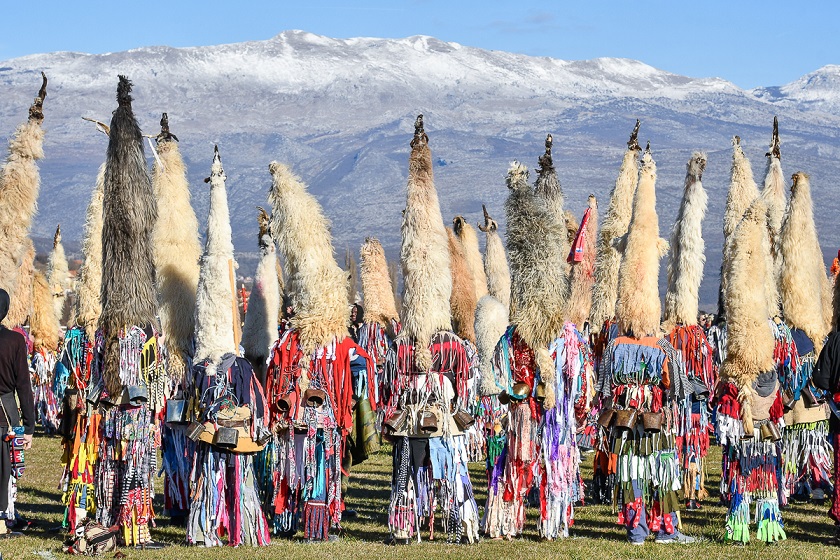
Ivana Pavičić
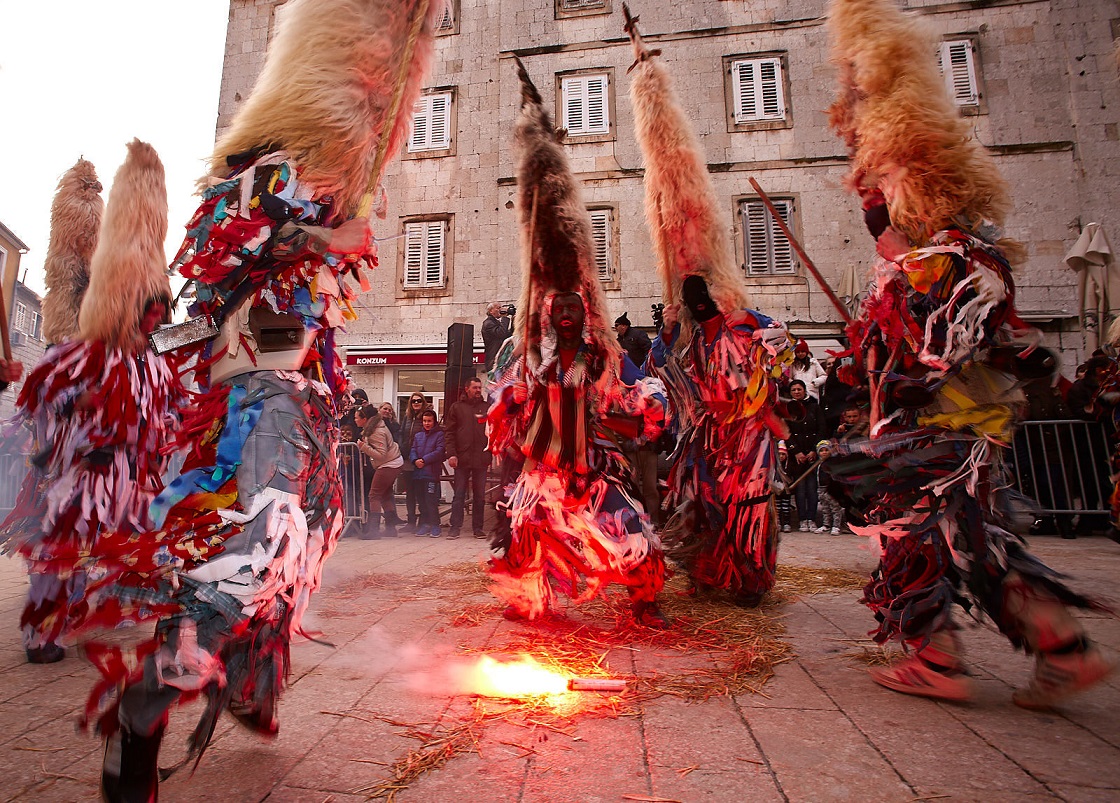
Nikola Belančić
Rich and inspiring carnival tradition
This long tradition of carnival customs, which preserves local identity, is nurtured and promoted by the association "Didi from Kamešnica" from the village of Gljev.
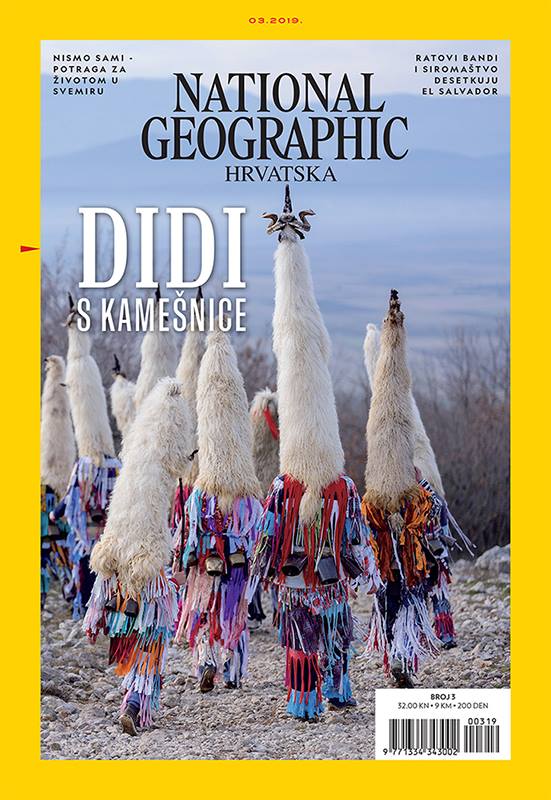
The Cetina region's carnival festival seeks to popularize the rich tradition of carnival customs, unique in Europe. Although carnival customs with similar themes exist in other parts of Croatia and Europe, they always embody the ritual struggle of good spirits with winter.
Therefore, "Didi" are welcome guests at festivals throughout Croatia and Europe and an inspiring motive for numerous scientific research, exhibitions, and lectures on the topic of intangible heritage. The famous magazine National Geographic brings the unique "Didi s Kamešnice" on one of its covers.
All photos © Sinj Tourist Board
For the latest travel info, bookmark our main travel info article, which is updated daily.
Read the Croatian Travel Update in your language - now available in 24 languages.
6th Carnival of Cetina Region Announced for February 15th
January 17, 2020 - Sinj and the Cetina region have long attracted attention to their unique and interesting events, but the carnival festivities are certainly in their own category.
This year, the Carnival will be held for the sixth time, on February 15th.
Numerous Carnival (or ‘Mačkare) groups will have the opportunity to present themselves to the public in the same place - resulting in a lively, cheerful and noisy procession that speaks to a long and colorful tradition according to carefully and strictly established rules.
Zeljko Zrncic
The carnival groups the best bearers and guardians of the customs in the Inland Dalmatian region, and the fact that they are on the list of protected immaterial cultural goods of the Republic of Croatia is also testimony to their grandeur.
In the villages of Gljev, Han, Obrovac Sinjski, Bajagić and Gala, the Carnival groups have a unique and original way of displaying ancient customs, complete with the sounds of bells and other accompanying rituals. In the municipality of Otok, each hamlet has its own Carnival group (Jelašce, Priblaće, Živinice, Gala, Ruda, Udovičići, and occasionally groups from Glavičica-Priblaće, Ovrlje and Koritā), while in the municipality of Trilj, you can find Carnival groups from the villages of Grab, Jabuka, Košute, Vedrine, Vrpolje, Čačvina and Velić.

Milan Sabic
The layout of the Carnival parade is based on traditional rules, irrespective of any changes, with only men allowed to participate.
The most attractive and impressive part of the procession is the ‘didi’ (old men), who carry the fleece of sheep on their heads, standing tall at the height of up to 1.5 meters, with bells around their waist. They are dressed in old clothes with colorful fringes sewn on. The 'didi' symbolizes the ritual battle of good spirits in winter and chase them away by making noise and jumping.
Zeljko Zrncic
Carnival customs similar to these exist in other parts of Croatia and Europe, and embody the ritualistic struggle of good spirits with the winter, driven by noise and jumping.
This festival seeks to popularize this rich tradition of carnival customs that is unique in Europe. The Dida tradition was preserved and every year, in January and February, the carnival groups perform in the Cetina settlements.
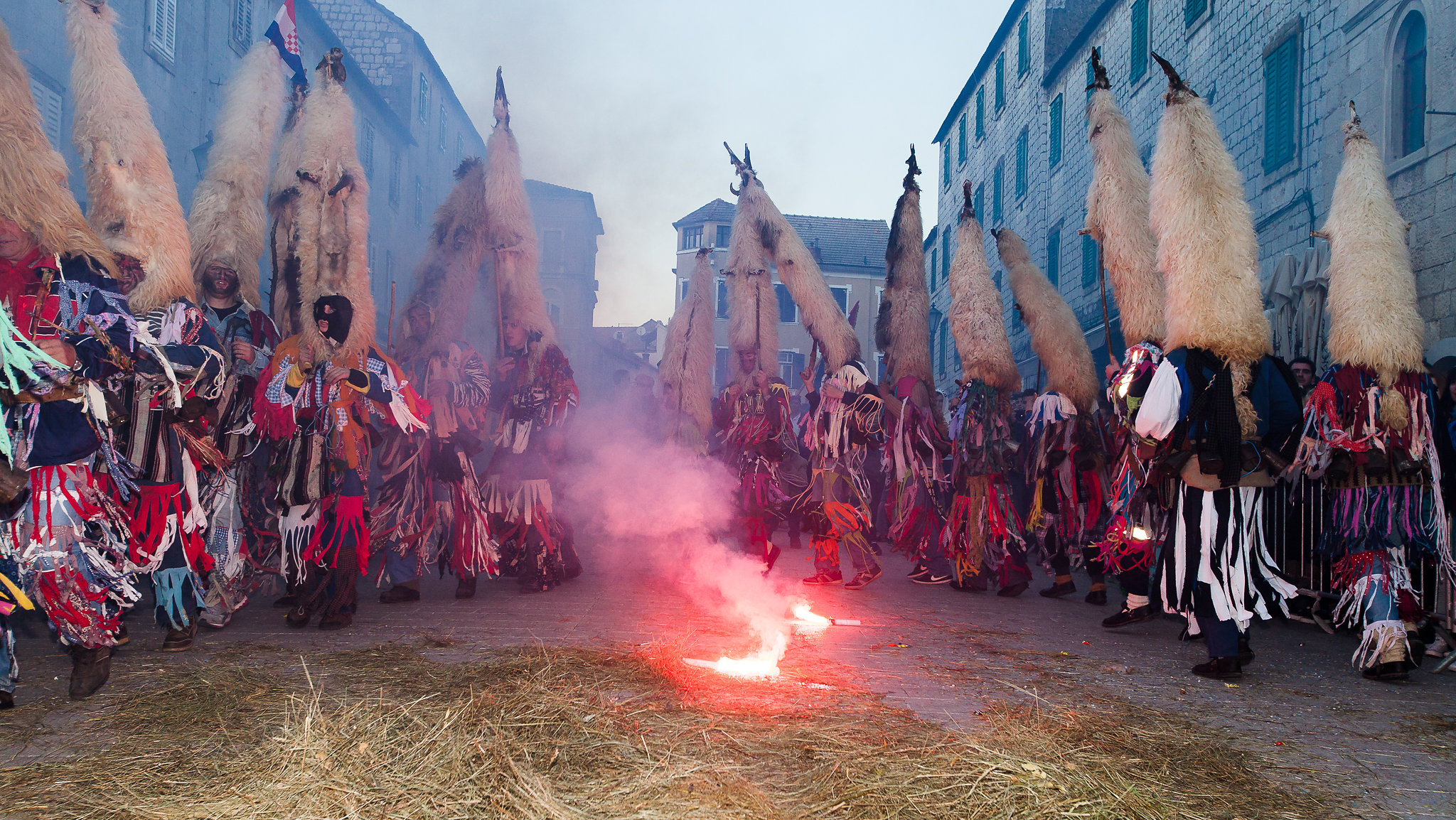
Nikola Belancic
In addition to the traditional carnival groups, many other groups participate, which, with their comical, humorous stage performances, complete and enrich the whole procession.
To read more about Inland Dalmatia, follow TCN'as dedicated page.
5. Carnival Hits the Streets of Cetina Region Next Month!
February 12, 2019 - Sinj and the Cetina region have long been attentive to unique and interesting events, but their Carnival celebration certainly belongs to a separate category.
This year, the Jubilee 5th Carnival will be held on March 2nd. Numerous Carnival (or ‘Mačkare) groups will have the opportunity to present themselves to the public in the same place - resulting in a lively, cheerful and noisy procession which speaks to a long and colourful tradition according to carefully and strictly established rules. The Carnival groups are the best connoisseurs and custodians of traditional customs in the region, and the fact that they are on the list of protected immaterial cultural goods of the Republic of Croatia is also testimony to their grandeur.
Željko Zrnčić
In the villages of Gljev, Han, Obrovac Sinjski, Bajagić and Gala, the Carnival groups have a unique and original way of displaying ancient customs, complete with the sounds of bells and other accompanying rituals. In the municipality of Otok, each hamlet has its own Carnival group (Jelašce, Priblaće, Živinice, Gala, Ruda, Udovičići, and occasionally groups from Glavičica-Priblaće, Ovrlje and Koritā), while in the municipality of Trilj, you can find Carnival groups from the villages of Grab, Jabuka, Košute, Vedrine, Vrpolje, Čačvina and Velić.

Nikola Belančić
The layout of the Carnival parade is based on traditional rules, irrespective of any changes, with only men allowed to participate.
The most attractive and impressive part of the procession is the ‘didi’ (old men), who carry the fleece of sheep on their heads, standing tall at a height of up to 1.5 meters, with bells around their waist. They are dressed in old clothes with colorful fringes sewn on. The 'didi' symbolize the ritual battle of good spirits in winter, and chase them away by making noise and jumping.
The 'Didi' from Kamešnica will observe the customs and rich traditions beyond the borders of Croatia. Namely, on February 16 and 17, they will be guests of the 24th edition of the carnival "Su Carrasegare Antigu Samughesu" in the city of Samugheo, in the province of Oristano, Sardinia. This important visit is the result of seven-year of cooperation between the Alka Knights Society Sinj and the members of Sa Sartiglia from Oristano, who happily visit each other during the Alka celebration and Sartiglia, one of the last Medieval games of chivalry with knights and horses in Mediterranean area. With the valuable support of Don Josip Dukić, this opportunity was realized.
Željko Zrnčić
An exceptionally valuable publication "Didi from Kamešnica” was promoted on January 31 in the Alka courtyard in Sinj. In the issue of the Croatian Photo Alliance - youth for youth - a visually appealing publication is the result of a series of photography collections for children and youth held from 2014 to 2018 in cooperation with the Carnival Association Didi from Kamešnica. With the promotion of the publication, the exhibition of photographs of the same name was opened, as well as an exhibition of Carnival masks by the elementary school students Ivan Mažuranić from Obrovac Sinjski. The main goal of familiarizing the children with the culture and customs has been completely fulfilled - and the heritage in the Cetina region lives through all generations.

Nikola Belančić
To read more about Inland Dalmatia, follow TCN'as dedicated page.


